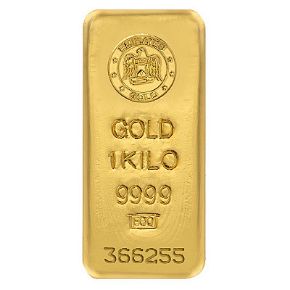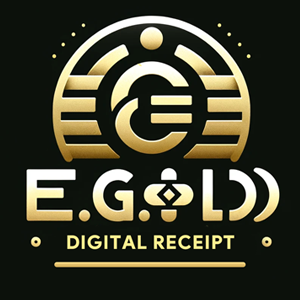
The rise of cryptocurrencies has reshaped the financial landscape, offering decentralized alternatives to traditional money and investments. Millions of investors and enthusiasts have flocked to Bitcoin, Ethereum, and other digital assets, driven by the promise of high returns and autonomy from conventional banking systems.
However, as cryptocurrencies become mainstream, governments and financial institutions worldwide have increased oversight and imposed various restrictions. These exchange restrictions limit how users can trade, convert, or withdraw their digital assets, often leaving holders with frustrating barriers to liquidity.
One powerful way to bypass these restrictions and safeguard wealth is by converting cryptocurrencies into physical gold. Gold’s intrinsic value, historical stability, and tangibility provide a reliable hedge against the uncertainties of both fiat currencies and cryptocurrencies. Converting crypto into gold enables holders to maintain control over their wealth without depending on intermediaries constrained by regulatory controls.
This comprehensive guide explores the nature of exchange restrictions, the rationale behind converting crypto to gold, detailed methods of conversion, legal considerations, and practical strategies to do so safely and effectively. By the end, you will have a deep understanding of how to leverage gold as a secure and accessible store of value amidst increasing crypto restrictions.
1. Understanding Exchange Restrictions in the Crypto World
1.1 What Are Exchange Restrictions?
Exchange restrictions refer to rules and limitations placed by regulatory bodies, exchanges, or governments that limit the ability to freely convert or withdraw cryptocurrencies. These restrictions can significantly affect your ability to liquidate or move your assets.
The main types of exchange restrictions include:
a) Withdrawal Limits
Many exchanges impose daily, weekly, or monthly withdrawal limits to manage liquidity and comply with regulatory mandates. For example, an exchange may limit withdrawals to $10,000 per day for unverified accounts, or even for fully verified accounts in certain jurisdictions. These limits can trap large amounts of crypto on the platform, effectively limiting liquidity.
b) Conversion Restrictions
Some exchanges restrict converting crypto directly into certain fiat currencies. For example, a user may only be allowed to convert Bitcoin into USD but not into local currency, or must use an intermediary token such as USDT or USDC to do so.
c) Geographic Restrictions
Due to sanctions or local laws, users from specific countries may be blocked from accessing certain exchanges or services altogether. For example, users from sanctioned countries like Iran or North Korea may face complete exclusion.
d) KYC/AML Requirements and Account Freezes
Exchanges enforcing stringent Know Your Customer (KYC) and Anti-Money Laundering (AML) policies may suspend or freeze accounts suspected of irregular activity. This often results in loss of access to funds until issues are resolved, which can take months.
e) Capital Controls
Some governments restrict the flow of capital across borders to protect their currency or economy. This can prevent the conversion of crypto into foreign currencies or limit the amount sent overseas, thus blocking normal exchange routes.
1.2 Why Do These Restrictions Exist?
Governments and exchanges impose these restrictions primarily for:
Preventing Illegal Activities: Crypto’s pseudonymous nature has made it attractive for illicit uses such as money laundering, tax evasion, and terrorism financing. KYC and AML measures aim to curb these abuses.
Protecting Domestic Economies: Countries impose capital controls to prevent mass outflows that can destabilize national currencies or economies.
Consumer Protection: To avoid scams, fraud, and loss of funds, exchanges introduce limits and verification processes.
Regulatory Compliance: As cryptocurrencies fall under financial regulation, exchanges must comply with laws like the U.S. Bank Secrecy Act, EU AML directives, and more.
1.3 Impact on Crypto Holders
For everyday crypto holders and investors, these restrictions pose several challenges:
Limited Liquidity: You may not be able to cash out large holdings quickly.
Forced Holding: Exchange freezes or limits can lock your assets in volatile markets.
Increased Costs: Multiple conversions or transfers increase fees.
Legal Exposure: Complex regulations create risks of inadvertent violations.
2. Why Convert Crypto to Gold?
2.1 The Timeless Value of Gold
Gold is arguably the most enduring store of value known to humanity. Its physical properties, rarity, and universal acceptance have cemented its role across civilizations and financial systems.
Key reasons gold remains invaluable:
Intrinsic Worth: Unlike fiat money or digital assets, gold’s value is not dependent on any government or technology.
Scarcity: The limited supply prevents inflationary dilution.
Global Acceptance: Accepted worldwide for trade and investment.
Tangible and Private: Physical possession allows privacy and control.
2.2 Crypto and Gold: Complementary Assets
While cryptocurrencies offer decentralization and high growth potential, their volatility and regulatory uncertainty can be concerning. Gold offers a stabilizing counterbalance.
Portfolio diversification benefits:
| Feature | Cryptocurrency | Gold |
|---|---|---|
| Volatility | High | Low |
| Tangibility | Digital | Physical |
| Regulatory Risk | Medium to High | Low to Medium |
| Liquidity | High | Medium |
| Store of Value | Speculative / Hedging | Traditional Hedge |
Holding both can reduce overall portfolio risk and offer multiple avenues for preserving wealth.
2.3 Hedging Against Inflation and Crisis
In times of hyperinflation, currency devaluation, or political instability, gold often outperforms fiat and digital assets. Crypto holders concerned about their holdings' long-term value may convert a portion into gold to preserve purchasing power.
2.4 Bypassing Exchange and Capital Controls
Physical gold is less regulated than fiat or crypto and often escapes many capital restrictions. Shipping physical gold or storing it internationally can help investors keep wealth outside restrictive jurisdictions.
3. Challenges of Converting Crypto to Gold
3.1 Legal and Regulatory Complexities
Before converting crypto to gold, understanding local laws is critical:
Gold Ownership: Some countries restrict gold ownership or require declarations.
Import/Export Rules: Shipping gold internationally may require licenses or declarations.
Taxation: Converting crypto to gold could be considered a taxable event.
Reporting: Large purchases may trigger mandatory reporting.
Failing to comply can lead to penalties, confiscation, or legal trouble.
3.2 Finding Trustworthy Gold Dealers
The gold market is not immune to fraud. Challenges include:
Counterfeit Gold: Fake bars and coins abound, especially in unregulated markets.
Overpricing: Some dealers charge exorbitant premiums over spot price.
Lack of Transparency: Unclear pricing and hidden fees.
Scams: Fake dealers and online scams targeting crypto users.
Selecting established dealers with verifiable credentials and transparent pricing is essential.
3.3 Liquidity and Pricing Issues
Gold premiums vary widely depending on:
Product Type: Coins tend to have higher premiums than bars.
Quantity: Bulk purchases lower premiums.
Location: Prices differ between countries and dealers.
Market Conditions: Supply chain disruptions can raise premiums and delay shipments.
Converting crypto to gold may also require converting crypto into fiat first, incurring additional fees and exposure to exchange risks.
3.4 Physical Security Concerns
Owning physical gold entails storage and insurance concerns:
Storage: Home safes, bank safety deposit boxes, or professional vaults.
Insurance: Protection against theft or loss.
Transport: Risks involved in shipping and receiving.
4. Methods to Convert Crypto to Gold Safely
4.1 Direct Crypto-to-Gold Dealers
With the growing demand for converting cryptocurrencies directly into gold, several platforms have emerged that specialize in crypto-to-gold transactions. These platforms streamline the process by allowing users to pay with cryptocurrencies and receive physical gold either delivered to them or stored securely on their behalf. Here are some notable platforms, beginning with ee.gold, a rising star in this niche:
ee.gold
ee.gold is a pioneering platform that allows users to convert their cryptocurrencies directly into physical gold with ease and security. Designed with user experience and trust at its core, ee.gold integrates blockchain transparency with the traditional gold market, offering a seamless bridge between digital and physical assets.
Key features of ee.gold:
Direct Crypto Payments: Accepts multiple cryptocurrencies including Bitcoin, Ethereum, and stablecoins, enabling users to buy gold directly without intermediate fiat conversions.
Verified Physical Gold: Gold products offered through ee.gold are LBMA-certified and sourced from trusted refiners, guaranteeing authenticity.
Secure Delivery and Storage Options: Users can opt to have their gold securely shipped to their address or stored in high-security international vaults with insurance coverage.
Transparent Pricing: ee.gold offers live spot price tracking combined with competitive premiums, ensuring fair market pricing.
User-Friendly Interface: Simplifies the purchase process with clear steps, automated payment processing, and real-time order tracking.
Strong Security Practices: Employs blockchain-based audit trails for every transaction, enhancing transparency and trust.
How it works:
Register on ee.gold and verify your identity as per KYC regulations.
Choose the amount and type of gold (bars or coins) you want to purchase.
Pay with your preferred cryptocurrency directly from your wallet.
Decide whether you want physical delivery or vault storage.
Track your order securely until completion.
ee.gold’s combination of technological innovation, compliance, and customer-focused services makes it an excellent choice for those seeking a safe, transparent way to convert crypto into gold without dealing with fiat intermediaries.
4.2 Peer-to-Peer (P2P) Crypto and Gold Trades
P2P trading offers more flexibility and potentially better prices but requires caution.
Process:
Find buyers/sellers on crypto forums, marketplaces, or social media.
Negotiate terms: amount, gold type, payment, delivery.
Use escrow services or meet in person.
Complete trade with mutual verification.
Platforms:
LocalBitcoins (for crypto-to-fiat and crypto-to-goods deals).
Reddit forums (r/PMsForSale, r/BitcoinMarkets).
Facebook groups and WhatsApp channels.
Pros:
Can avoid exchange and bank controls.
Negotiable pricing.
Access to rare coins or bars.
Cons:
Risk of scams or fraud.
Requires due diligence.
Legal grey areas in some jurisdictions.
4.3 Crypto to Fiat to Gold via Banks or Exchanges
This conventional route remains popular where exchange restrictions allow it:
Sell crypto on an exchange for fiat currency.
Withdraw fiat to bank account.
Purchase gold through a dealer or bank.
Advantages:
Familiar process.
Regulated environment offers some protections.
Large dealer network.
Disadvantages:
Withdrawal limits and delays.
Bank scrutiny and possible freezes.
Taxable event.
Multiple transaction fees.
4.4 Using Stablecoins and Tokenized Gold
The intersection of blockchain and gold is growing:
Convert crypto to stablecoins (USD-pegged like USDT, USDC).
Buy tokenized gold — blockchain tokens backed 1:1 by physical gold.
These tokens can be traded instantly or redeemed for physical gold.
Examples:
PAX Gold (PAXG): A popular token backed by London Bullion Market Association (LBMA) gold bars.
Tether Gold (XAUT): Another gold-backed token on Ethereum.
Digix Gold (DGX): Each token represents 1 gram of physical gold.
Pros:
Immediate liquidity.
No need to handle physical gold initially.
Transparent and auditable.
Cons:
Requires trust in the issuer.
Regulatory uncertainty.
Still exposure to counterparty risks.
Not physical gold until redeemed.
5. Step-by-Step Guide: Converting Crypto to Physical Gold
Step 1: Evaluate Your Situation and Objectives
Determine how much crypto you want to convert.
Assess legal, tax, and reporting requirements.
Consider your storage and security options.
Step 2: Choose the Type of Gold
Coins: American Eagles, Canadian Maple Leafs, South African Krugerrands.
Bars: 1 oz, 10 oz, 1 kg bars; typically cheaper per gram.
Jewelry: Not recommended for investment due to high premiums.
Step 3: Research and Select Dealers or Platforms
Verify dealer licenses and reputations.
Compare premiums and delivery policies.
Confirm crypto payment acceptance and supported coins.
Step 4: Secure Your Crypto Funds
Use secure wallets.
Transfer from exchanges to private wallets if necessary.
Double-check wallet addresses.
Step 5: Place Your Order
Lock in gold price (spot + premium).
Confirm payment details.
Verify transaction confirmation.
Step 6: Arrange for Delivery or Storage
For physical delivery: ensure insured shipping.
For vault storage: verify security measures and fees.
Step 7: Safeguard Your Gold
Use safes, bank deposit boxes, or third-party vaults.
Keep documentation for insurance and resale.
6. Risks and How to Mitigate Them
6.1 Fraud and Scams
Use only well-reviewed, licensed dealers.
Avoid deals that promise unrealistically low prices.
Employ escrow services for P2P trades.
Validate authenticity with hallmark and assay certificates.
6.2 Regulatory and Legal Risks
Stay informed on laws regarding crypto and gold.
Declare purchases as required.
Keep detailed records for tax purposes.
Consult a legal advisor if needed.
6.3 Physical Security Risks
Store gold in secure, insured facilities.
Avoid publicizing holdings.
Use tamper-proof packaging for shipping.
6.4 Market and Pricing Risks
Understand gold price volatility.
Expect premiums to vary.
Beware of timing conversions to avoid losses.
7. Case Studies and Real-World Examples
7.1 Case Study: Converting Crypto to Gold to Circumvent Capital Controls
In countries like Venezuela or Zimbabwe, hyperinflation and capital controls prevent citizens from converting crypto to stable fiat currencies. A resident used a crypto-to-gold platform accepting Bitcoin, purchased gold bars, and stored them with an international vault, preserving wealth from currency collapse.
7.2 Case Study: Using P2P Gold Trades for Privacy
An investor in Europe preferred privacy over regulatory reporting. Using a trusted P2P platform and escrow, they exchanged Ethereum for physical gold coins in person, avoiding bank records and tax paperwork while accepting the risk of trust.
8. The Future of Crypto-Gold Conversions
8.1 Increasing Integration of Gold and Crypto Markets
Blockchain technology is enabling:
Smart contracts for secure gold delivery.
Tokenized gold with fractional ownership.
Global decentralized gold marketplaces.
8.2 Regulatory Outlook
Governments likely to formalize crypto-gold regulations.
Potential new tax frameworks.
Increased transparency and KYC in gold-backed tokens.
8.3 Technological Innovations
AI-driven gold price prediction.
Blockchain-based gold provenance and anti-counterfeit measures.
Enhanced security vaults with biometric access.
The growing complexity of cryptocurrency exchange restrictions challenges investors seeking liquidity and wealth preservation. Converting cryptocurrencies into physical gold offers a strategic escape route, combining the best of traditional and modern assets. While legal, logistical, and security hurdles exist, careful planning, trusted partners, and sound knowledge empower crypto holders to protect and diversify their wealth securely.
By understanding the nuances of exchange restrictions, choosing the right conversion methods, and mitigating risks, investors can confidently navigate this evolving landscape — ensuring their wealth endures beyond the limitations of digital finance.
NOTE
This Content is the copyrighted content of EE.GOLD. All rights are reserved. You are welcome to share or use our content only by including direct links to our website. Any other form of reproduction, distribution, or use without proper attribution is strictly prohibited.
This Content is intended solely for educational purposes. The information provided does not constitute financial or investment advice.
Please note that Digital Storage Receipt, Secure Storage Solutions, and Physical Gold Sales are the only services offered by EE.GOLD.
We strictly adhere to government regulations and are firmly against all illegal financial or investment activities globally.
For further inquiries, feel free to contact us through our official channels.










.png)

